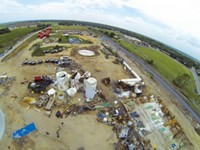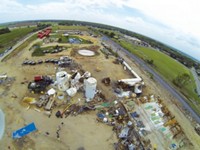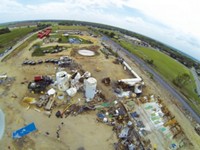Advertisement
Grab your lab coat. Let's get started
Welcome!
Welcome!
Create an account below to get 6 C&EN articles per month, receive newsletters and more - all free.
It seems this is your first time logging in online. Please enter the following information to continue.
As an ACS member you automatically get access to this site. All we need is few more details to create your reading experience.
Not you? Sign in with a different account.
Not you? Sign in with a different account.
ERROR 1
ERROR 1
ERROR 2
ERROR 2
ERROR 2
ERROR 2
ERROR 2
Password and Confirm password must match.
If you have an ACS member number, please enter it here so we can link this account to your membership. (optional)
ERROR 2
ACS values your privacy. By submitting your information, you are gaining access to C&EN and subscribing to our weekly newsletter. We use the information you provide to make your reading experience better, and we will never sell your data to third party members.
Safety
Agencies Weigh Chemical Facility Safety Overhaul
Executive Order: Task force recommendations will be out by the end of May, could include tighter control of ammonium nitrate fertilizer
by Glenn Hess
March 11, 2014
Adding ammonium nitrate and other explosive chemicals to the list of substances the Environmental Protection Agency regulates under the risk management provisions of the 1990 Clean Air Act is one option being considered by a federal task force working to improve the safety and security of U.S. chemical facilities.
Mathy Stanislaus, an EPA assistant administrator, delivered that news to the Senate Environment and Public Works Committee at a March 6 hearing. Stanislaus cochairs a multiagency chemical safety working group that is scheduled to send a full set of new safety recommendations to the White House by the end of May.
President Barack Obama established the Chemical Facility Safety & Security Working Group last year in response to the April 2013 explosion and fire at a fertilizer distribution facility in West, Texas. The accident left 15 people dead, including a dozen emergency responders.
Obama directed EPA, the Department of Homeland Security, the Occupational Safety & Health Administration and other federal agencies to coordinate on chemical safety regulations and issue recommendations for new rules.
At the hearing, Stanislaus told lawmakers that the task force had issued safety advisories and guidance to industry trade associations outlining best practices for the handling and storage of hazardous chemicals, including ammonium nitrate, the substance linked to the West explosion.
But Democrats on the committee said they were dismayed that nearly a year after the disaster in Texas, ammonium nitrate has not been added to EPA’s risk management program. Under that initiative, companies that use or store certain toxic or flammable chemicals above threshold amounts are required to take steps to prevent accidental airborne releases of those substances.
“I don’t know why it’s taking you so long to figure this out,” Sen. Barbara Boxer (D-Calif.), Environment & Public Works committee chairwoman, told Stanislaus. “We’ve had a lot of deaths from ammonium nitrate. We’re going to continue to press on it and hope you will do so, after seeing the result of not doing it.”
Stanislaus also indicated that the working group is considering whether chemical facilities should be required to assess and adopt, if feasible, inherently safer technologies, such as switching to less hazardous chemicals or storing smaller quantities of dangerous substances on-site (C&EN, March 10, page 11). He said no final decisions have been made.
Republican members of the committee cautioned against over-regulation. EPA and other agencies should focus on enforcing existing rules, rather than creating new ones, said Sen. John A. Barrasso (R-Wyo.). “My hope is that federal agencies can better work together.”





Join the conversation
Contact the reporter
Submit a Letter to the Editor for publication
Engage with us on Twitter